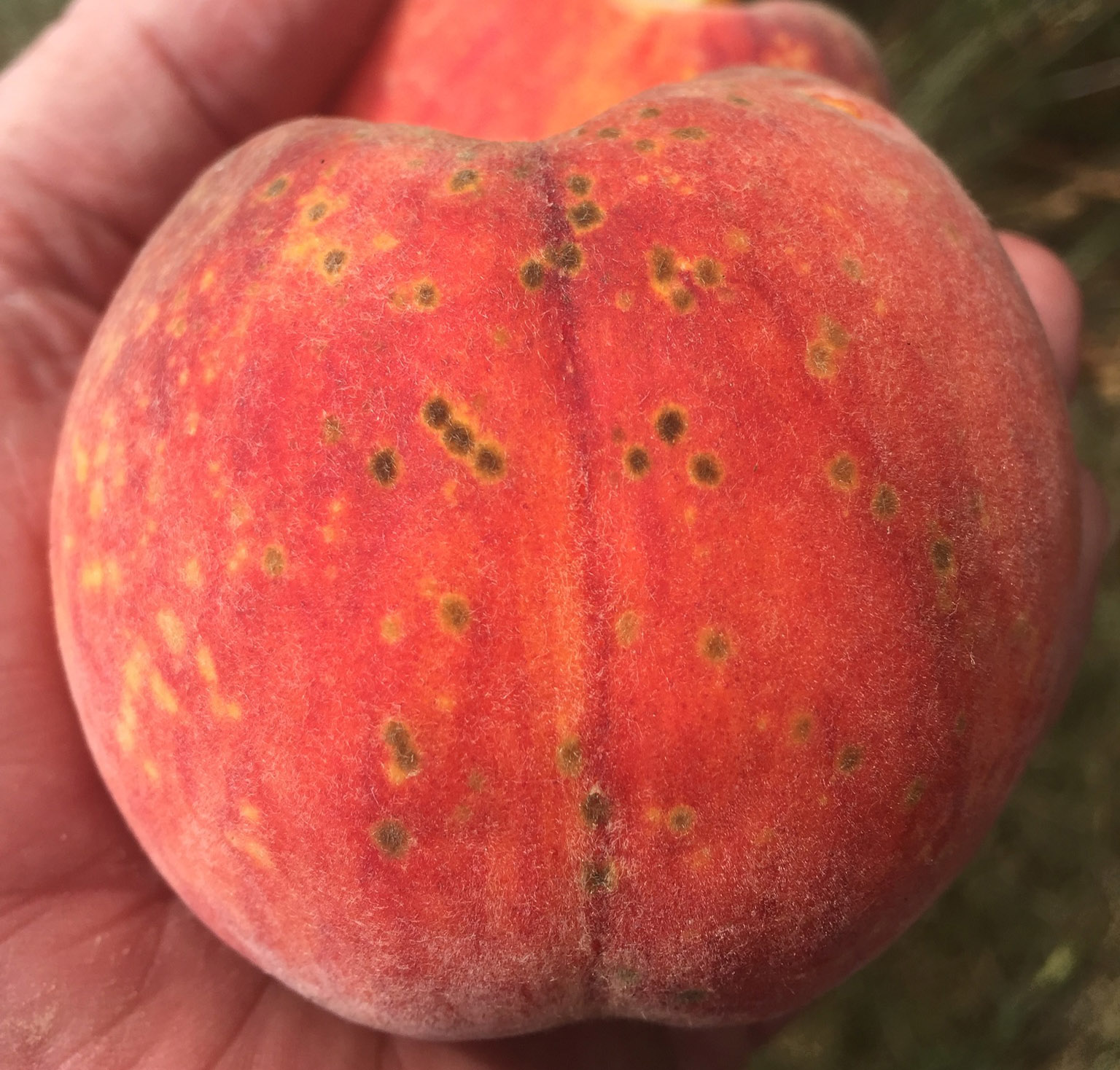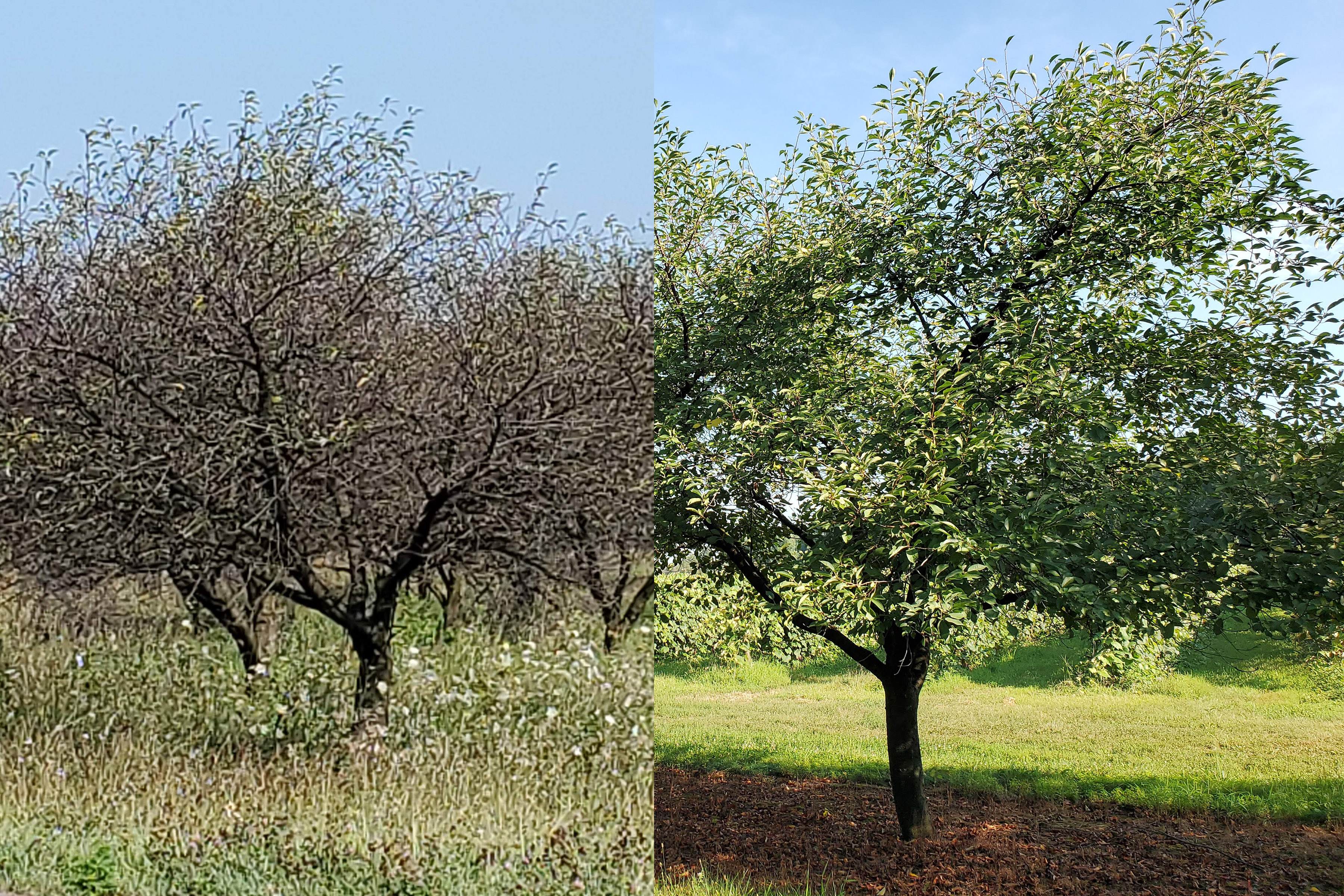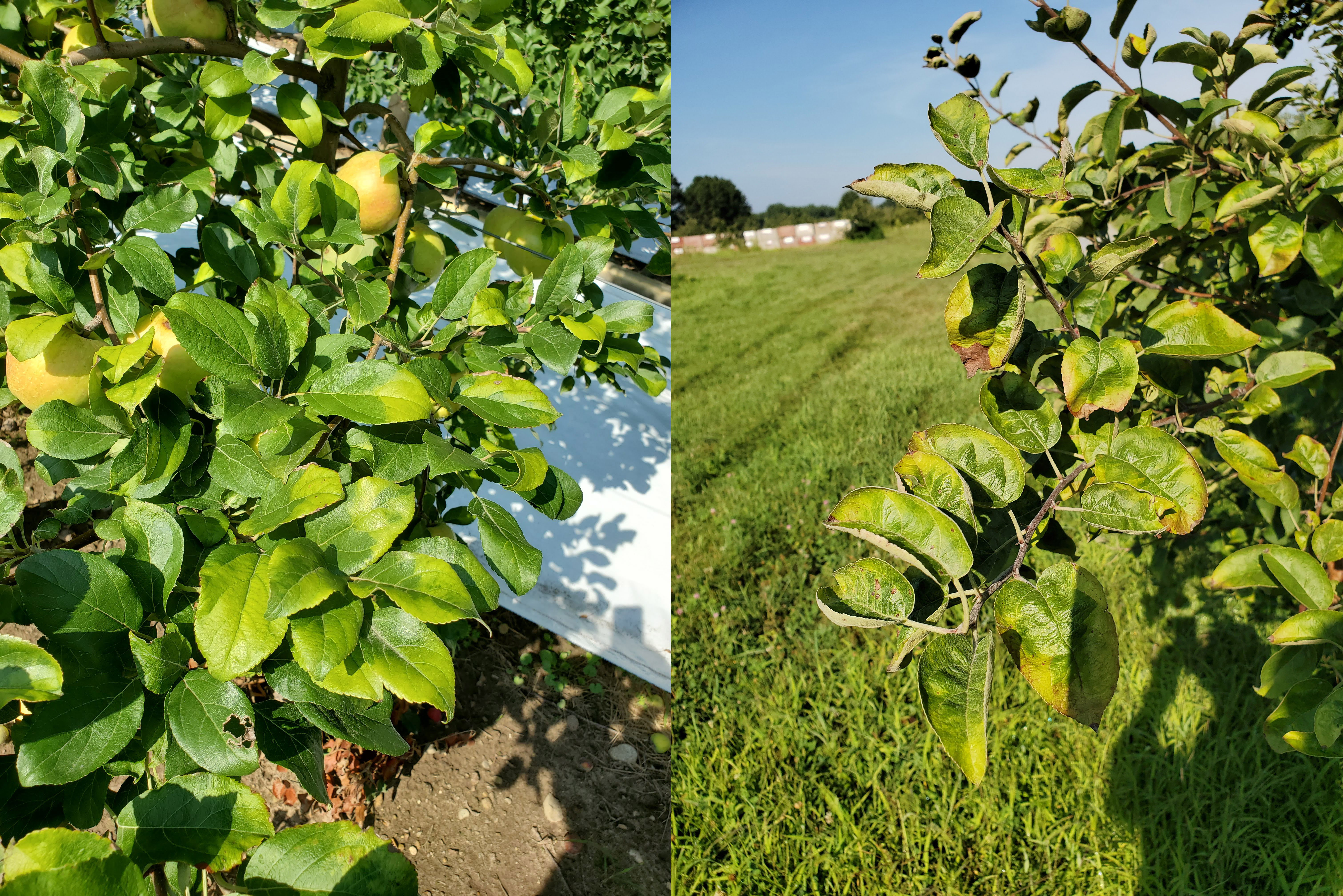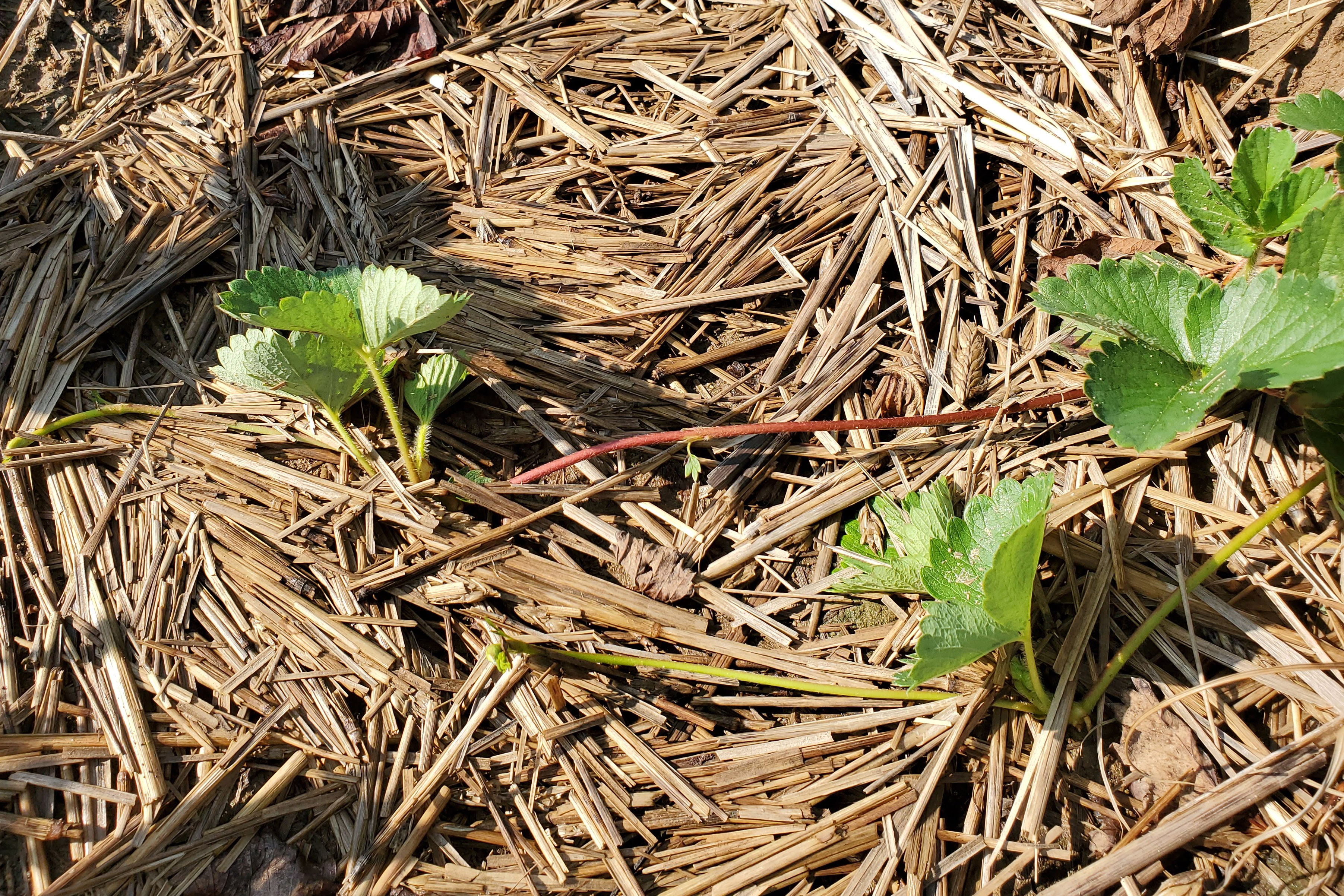Southwest Michigan fruit update – Aug. 11, 2020
A derecho blew across the region leaving damage in its wake. Relatively minor damage to fruit plantings. Some fruit, trees and limbs down in orchards and blueberry fields, and some broken trellis posts in grape vineyards.

Weather
Last week was cool with highs in the 70s and lows in the 50s. Warmer temperatures returned over the weekend, the high rising to 90 degrees Fahrenheit. Thunderstorms crossed the region early Monday morning, Aug. 10. This was followed by a strong derecho Monday evening that crossed the state quickly with rain and strong straight-line winds. This storm caused significant property damage in some areas.
This week will be warm, with highs in the upper 80s through the weekend. The best chance of rain is the weekend and early next week. With a cool week, according to MSU Enviroweather, we picked up fewer growing degree days last week: 178 DDbase 42 and 123 DDbase 50, respectively 25 and 18 per day.
Southwest Michigan GDD Summary from March 1 through August 9, 2020
|
Station |
GDD 42 F |
GDD 45 F |
GDD 50 F |
|
Benton Harbor (SWMRC) |
2852 |
2495 |
1947 |
|
Lawton (Lawton) |
2826 |
2466 |
1914 |
|
Fennville (TNRC) |
2649 |
2299 |
1764 |
|
Average for the SW region |
2806 |
2448 |
1901 |
|
Average last week |
2628 |
2291 |
1778 |
Tree fruit
Rainfall this summer has been scarce, and we are seeing signs of stress in forest trees and some fruit plantings. Codling moth numbers are declining in most orchards, but numbers spiked in a few orchards. Oriental fruit moth numbers are trending up. This is when we expect the third generation adults to emerge between 2200 and 2400 GDD base 45. Obliquebanded leafroller numbers are up indicating the beginning of the second generation. Brown marmorated stink bug adults from the summer generation are showing up now. The window for collecting foliar tissue samples is closing. Leaf samples for foliar tissue analysis can be collected up to mid-August. San Jose scale crawlers have been found at MSU’s Trevor Nichols Research Center in Allegan County.
Peaches and nectarines: Redhaven, PF9A-007, and PF11 Nectarine harvest is underway in central Berrien County. Recent rains have helped to size fruit. Brown rot is becoming more common on split pits and fruit damaged by insects. The third generation of Oriental fruit moth is out now. Both bacterial spot and peach scab symptoms are easy to find on susceptible varieties but are past the point of effective control. To increase fruit color, do some light summer pruning one to two weeks before harvest to increase sunlight on varieties needing more color.

Cherry harvest is over. Recent dry weather reduced cherry leaf spot infections. Most yellow infected leaves have fallen. Leaves are gone from the treetops in well sprayed orchards, but poorly sprayed orchards are almost defoliated. To maintain good tree health and winter hardiness, growers need to continue to protect the leaves from cherry leafspot into September. See: Low spray programs for tart cherry.
In plums, harvest of summer plums continues. Castleton harvest is expected to start next week. Brown rot is showing up on insect damaged fruit. Plums held on the tree until soft ripe are susceptible to spotted wing drosophila attack.

Apple fruit are 2+ inches in diameter. Codling moth numbers are declining in most orchards. Oriental fruit moth numbers are up signaling the start of the third-generation adults. Obliquebanded leafroller numbers are up also indicating the beginning of the second generation. Bitter rot is showing up as well as other summer fruit rots. Growers need to maintain sooty blotch and flyspeck protection, with reapplication when rain has likely reduced coverage. Apple maggot should come out in good numbers after all this rain. Traps should be placed to monitor susceptible sites. Potato leafhopper burn is pretty common this year in many crops. Our predicted apple harvest dates will be released soon.
Pear Bartlett fruit are now susceptible to codling moth. Like apples, pears should be protected against sooty blotch and fly speck. Pear psylla are easier to find.
Small fruit
Japanese beetle is scarce. Spotted wing Drosophila (SWD) numbers are up in southwest Michigan with cooler weather. SWD numbers increase rapidly in August. Leaf samples for foliar tissue analysis should be collected from mid-July to mid-August.
Grapes veraison continues. We are beginning to see color in Concord grapes. The disease focus is on reducing the spread of downy mildew and powdery mildew. Downy mildew spreads rapidly when we have heavy dews in the morning. Scout for downy mildew on the leaves and protect healthy leaves from infection. Downy mildew can defoliate the vines in August. Powdery mildew prefers humid warm weather. Powdery mildew seems to be widespread this year. Grape berry moth are up indicating the third generation is flying. The grape berry moth model on Enviroweather predicts egg laying began about Aug. 2 in Berrien and Aug. 7 in Van Buren counties. See: August is key time for protecting clusters from grape berry moth. Growers who have had trouble with grape berry moth in the past may need more than one spray. The second spray should be applied about two weeks after the first. We, at MSU Extension, believe it likely that we will see a fourth generation this year.
Blueberry harvest continues. Growers are harvesting Jersey and other late mid-season varieties. Elliott harvest has begun. Many fields looking rough. There was a lot of shoot collapse earlier mostly phomopsis, but other diseases are being found. Many plants are showing red leaves as a sign of stress. Growers should maintain irrigation after harvest maintaining plant vigor. Growers need to maintain tight coverage for SWD. SWD really likes these cooler conditions.

Strawberries in matted rows have runners. Growers should maintain protection against potato leafhopper and leaf spot diseases.
Bramble growers should remove the spent floricanes in summer red raspberries to increase air circulation in the row and reduce diseases on the new primocanes. Blackberry harvest continues. Fall raspberry harvest will start soon. SWD is the major insect pest of brambles and can destroy the crop quickly. Treat SWD as a disease and focus on keeping it out. Do not let this pest become established in the field. Pick ripe fruit frequently so that ripe fruit are not available to the pest for long.
Related Articles:
Southwest Michigan fruit update – August 4, 2020
See: Managing Brown Marmorated Stink Bug in Michigan Orchards
Low spray programs for tart cherry.
Michigan grape scouting report – August 5, 2020
August is key time for protecting clusters from grape berry moth



 Print
Print Email
Email




